PT | EN
GALLERY
From the devils of Rosa Ramalho (Barcelos, Portugal) to the Vivian Girls of Henry Darger (Chicago, USA), there is a whole marginal world, full of magic, myth and fantasy, waiting to be discovered.
At Cruzes Canhoto we propose to embark on the adventure of unveiling this fantastic universe, made of unusual colors and shapes, with origins in the deepest and remotest entrails of human nature, with a passionate and sensitive approach, indifferent to the conventions of the art markets.
The pieces exhibited in the gallery are created by people with absolutely unique mental universes, mostly self-taught ones who express themselves intuitively, without commercial pretensions or ambitions of celebrity, not even considering themselves artists.
Unique in its kind in the Iberian Peninsula, it gathers in the same space works of raw, tribal and folk arts.
ART BRUT
The term Art Brut, coined by the french artist Jean Dubuffet in 1945, describes the art created by unadapted, deranged, visionary, medium, alienated people. It is sometimes misapplied for other marginal expressions, such as outsider art, singular art or folk art, since in many cases it is actually difficult to trace the boundaries between each genre.
It is defined by the rejection of the established art scene, primarily on the commercial and social promotion premises of the creative act. The works created by these artists, without any academic constraints, formal training or specific formatting, emerge spontaneously as an impulse, an inner scream that urges to be heard, springing from their guts, often as a means of therapy for their mental disorders.
Once obscured, it is now considered by many as the most genuine and vital art. There is no collection of any museum of modern art from any great capital that can be considered fully complete without at least a couple of works of this kind. So it is in the MoMa in New York, the Tate Modern in London and the Centre Pompidou in Paris.
TRIBAL ART
Also know as “art premier”, “tribal art”, “natural art”, “primordial art”, “original art”, “traditional art” or “wild art”.
In its most basic and least contaminated form, it is the artistic expression that comes closer to the human essence, impenetrable to rational discourse and accessible only by the sensitive way.
It is characterized by the anonymity of the author, where the artist sacrifices the individual attention for the benefit of his community, in the process of finding his identity through the art produced. In it we highlight elements of popular tradition of a society, usually organized in a tribal model and therefore almost always linked to the realms of ritual, religion and magic. In general, these artists are self-taught and develop by themselves the tools and techniques they use in their work.
Are considered primitive arts the pre-Columbian arts (Maia, Olmeca), the traditional African art, the Inuit art (Eskimo people), the Amerindian art (indigenous peoples of North America), the traditional Asian art and the art of Oceania (Melanesia, Micronesia, Papua), especially from the Australian aborigines.
In the beginning of the XX century, with the modernist movement, primitive and tribal creations became part of the collectable art objects, subject to cataloguing, contemplation and exhibition, even generating an art market and acting as a source of inspiration and renewal for the avant-garde of that time.
FOLK ART
Despite the inevitable contamination of cultures, folk art is seen as the individualized representation of a community or a specific group – being it social, economic or cultural. As in the primitive arts, the creations are usually produced by self-taught artists without any academic training, who transmit their knowledge from generation to generation.
It distinguishes itself from scholar art for its easy access and low cost, but also for its thematic subjects which almost always have reference in the popular imaginary, where the sacred and the profane are in constant confrontation.
The distance between the artistic creation and handicraft is very short and sometimes not even discernible. It’s the signature mark and the passage of time that distinguish the popular artist from the artisan. A master is only considered as such by art critics, as much as by its peers.


